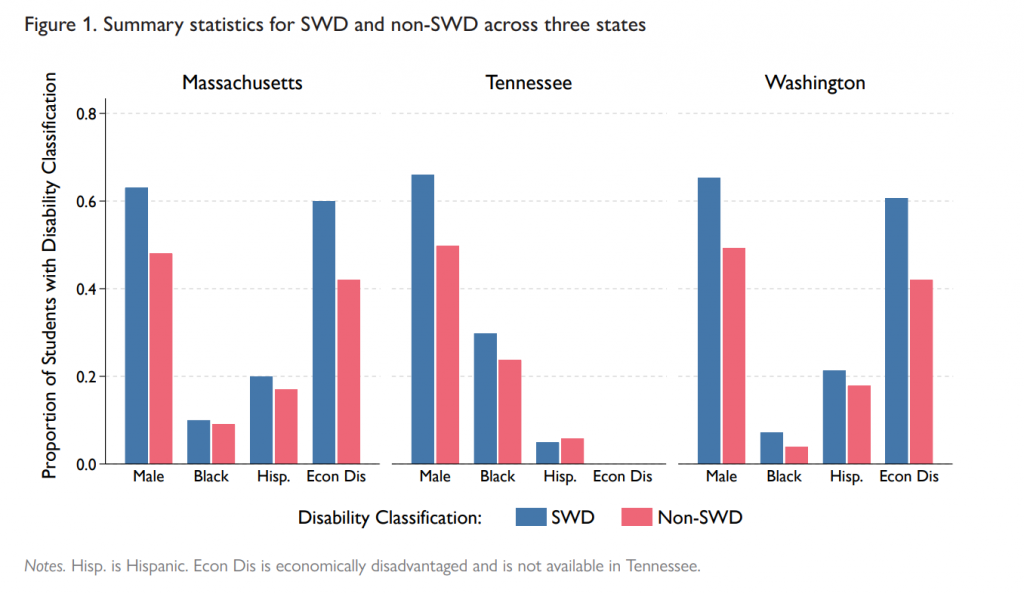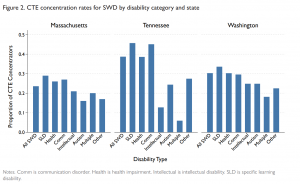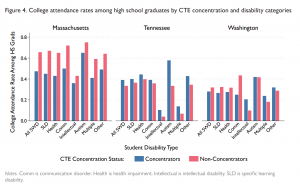Advance CTE’s “Research Round-Up” blog series features summaries of relevant research reports and studies to elevate evidence-backed Career Technical Educational (CTE) policies and practices and topics related to college and career readiness. This month’s blog examines how the COVID-19 pandemic impacted CTE concentration rates. The findings align with Advance CTE’s vision for the future of CTE where each learner has the means to succeed in the career preparation ecosystem.
![]() Due to the specific hands-on delivery and instruction requirements of career and technical education (CTE) courses, the coronavirus pandemic and the resulting online instruction posed new challenges for CTE programs and concentrators. The study, A Multi-State Analysis of Trends in Career and Technical Education, explored the level of impact of the coronavirus pandemic on CTE concentration rates using administrative data across five states: Massachusetts, Michigan, Montana, Tennessee, and Washington.
Due to the specific hands-on delivery and instruction requirements of career and technical education (CTE) courses, the coronavirus pandemic and the resulting online instruction posed new challenges for CTE programs and concentrators. The study, A Multi-State Analysis of Trends in Career and Technical Education, explored the level of impact of the coronavirus pandemic on CTE concentration rates using administrative data across five states: Massachusetts, Michigan, Montana, Tennessee, and Washington.
Methodology
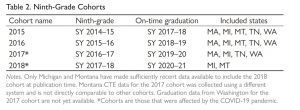
The analysis sample for each state was defined as first-time ninth graders observed consistently over their four years in high school. The population of learners, CTE concentrators, was selected for observation because the definition of a concentrator is more similar across states than the definition for CTE participation. Another reason that the authors chose to observe rates of CTE concentrators rather than completers was that indicators for program completion were not readily available across the state populations.
The following tables share the concentrator definitions used as well as a breakdown by race/ethnicity and geography of the learners observed to aid state CTE leaders in aligning the findings with their own learner populations.
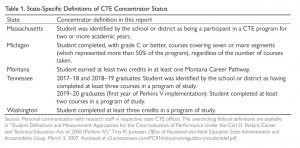
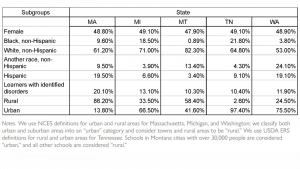
The study was conducted by researchers Carly Urban, Celeste K. Carruthers, Shaun Dougherty, Thomas Goldring, Daniel Kreisman, and Roddy Theobald and examined the following questions:
- Did CTE concentration rates change at the start of the coronavirus pandemic?
- Did gaps in concentration rates change by student race, ethnicity, gender or identified disability status?
- What are the differences in concentration rates across rural and urban areas and have these gaps changed over time?
- Were CTE concentrators more likely to graduate from high school and did this change at the start of the pandemic?
- Which career clusters have seen the largest changes in participation?
Findings
- CTE concentration rates changed minimally in the featured states at the start of the pandemic, with the exception being Tennessee, where the class of 2020 was significantly more likely to concentrate in CTE than the previous cohorts.
- The gaps in CTE concentration by gender, race and ethnicity largely did not widen at the start of the pandemic.
- The gaps in CTE concentration by identified disability status did not widen in any state for the first cohort impacted by the pandemic (SY16-17). However, one year into the pandemic, concentration rates for students with an identified disability in two states fell compared to students without an identified disability.
- In Michigan, Montana, and Tennessee, students in rural areas appeared more likely to concentrate in CTE than students in urban areas post-pandemic. In Massachusetts, CTE concentration was higher in urban than rural areas. While the two groups have virtually no difference in concentration rates in Washington.
- CTE concentrators are more likely to graduate from high school than non-concentrators in all five states both before and after the pandemic.
- Changes in CTE clusters were relatively small when comparing the cohorts who were on track to graduate just before and after the pandemic. The fields with the largest positive and negative changes to concentrator rates varied by state.
Recommendations for Members
While these findings are descriptive and suggest that CTE concentration rates did not drop at the onset of the pandemic, the researchers have recommendations for state leaders to continue to support the successful coordination of CTE programs.
- Preliminary findings indicate that the ways states adapted CTE education at the onset of the pandemic maintained concentration rates for learners with a disability. However, concentration gaps widened for learners with disabilities in subsequent years in some states, signaling that more attention must be given to meeting these learners’ needs in program design.
- States should consider the mode of communication they’re currently using to monitor the change in demand for or inability to supply specific CTE programs in schools.
- States should continue to track and improve the quality of the outcome data they gather from CTE programs.
To learn more about how states can approach continuing to develop effective and accessible CTE data reporting tools to advance this report’s final recommendation, check out Advance CTE’s Beyond the Numbers: Design Principles for CTE Data Reporting. This guide provides state and local leaders with the necessary tools to inform early design and development of CTE data reporting tools or as a checklist to ensure their final reports align with best practices for access and usability.
To read more of Advance CTE’s “Research Round-Up” blog series featuring summaries of relevant research reports and studies click here.


